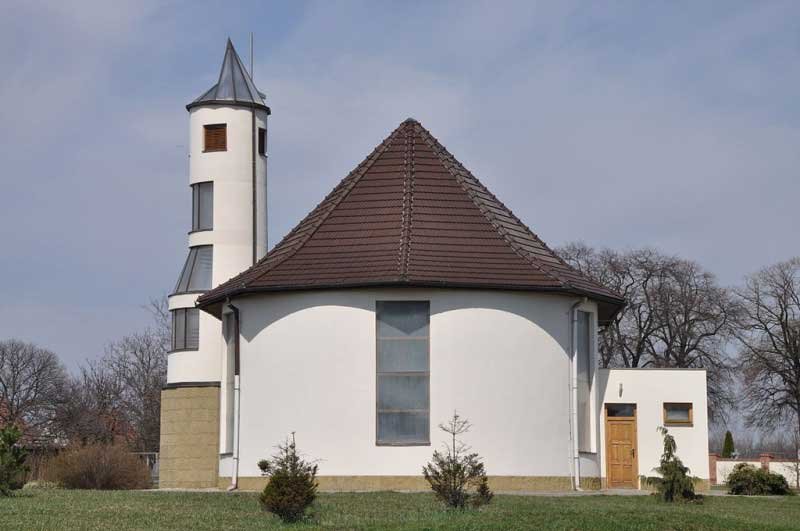Some 50 new Catholic churches have been built in the Czech Republic since the 1989
Despite being the most atheistic country, new places of worship are sprouting up
 Prague, Jan 13 (?TK) — Some 50 new Catholic churches have been built in the Czech Republic since the 1989 collapse of the communist regime, mainly in Moravian regions with a higher share of believers, and another ten are being planned or under construction, daily Lidové noviny (LN) writes today.
Prague, Jan 13 (?TK) — Some 50 new Catholic churches have been built in the Czech Republic since the 1989 collapse of the communist regime, mainly in Moravian regions with a higher share of believers, and another ten are being planned or under construction, daily Lidové noviny (LN) writes today.
While in Bohemia, the western part of the country, only a few new churches appeared in the past two decades, in the east, in Moravian and Silesian dioceses, they were mushrooming.
In the Olomouc archdiocese, 19 new churches and in the Ostrava-Opava diocese, both in north Moravia, 14 new churches and nine chapels have been built since 1989.
In the capital of Prague, two new Catholic churches have been built along with three church community centers that are also used for liturgical purposes, LN notes.
It says Czech believers have contributed tens of millions of crowns to new churches since 1989.
They are most often constructed at modern prefab housing estates from the communist era. Their population has been aging, and consequently, the concentration of believers has been rising, LN writes.
At present a new Catholic church has been designed for the Lesná housing estate in Brno, the largest town in Moravia. So far several hundreds of local believers have met at a spiritual community center that was opened a couple of years ago.
"A church should be the center of life in a local community. This is why a lot of churches are now being built at housing estates," Brno diocese general vicar Ji?í Mikulasek told LN.
LN also writes that a new generation of believers is growing up in Moravia and they do not want to travel far from their municipality to divine services. Therefore local inhabitants do not hesitate to collect money for a church's construction. These projects are often financially supported by local authorities and town halls, firms and regions.
For instance, a new church in Hrušovany near Brno, opened in 2004, cost 12 million K?. Local believers and sponsors funded its construction, while a minor part of the sum went from public finances, LN notes.
The paper points out that architects consider a church building a challenge as it is subject to quite many rules. Besides, a bishop and the priests' council must first decide, whether the Church would take over such a new church.
A new church must not be shocking. Its architectonic appearance must remain sober, with light colors on the facade and possibly some glass elements. The interior layout and equipment play an important role. Church experts also comment on the altar design and the placement of the sanctuary where the Eucharist is preserved, LN adds.
Modern churches are, however, sometimes connected with less typical adjacent parts, such as a block of priests' flats, underground garages or a small cafe, LN writes.
There are also several new churches built by local enthusiasts or a municipality alone who have offered them to the Churches as ecumenical centers. Such an ecumenical church is now being built in ?er?any near Prague, LN adds.
"It needs patience and carefulness," architect Marek Št?pán, whose studio has created several modern churches, said about their designing.
Št?pán, who is now an experienced author of religious buildings and is well-versed in liturgy, points out that each part of a church is full of symbolism.
"However, it is much more important to think hard about what face a church should get to remain a church and look like that," he told LN.


 Votes : 0
Votes : 0









